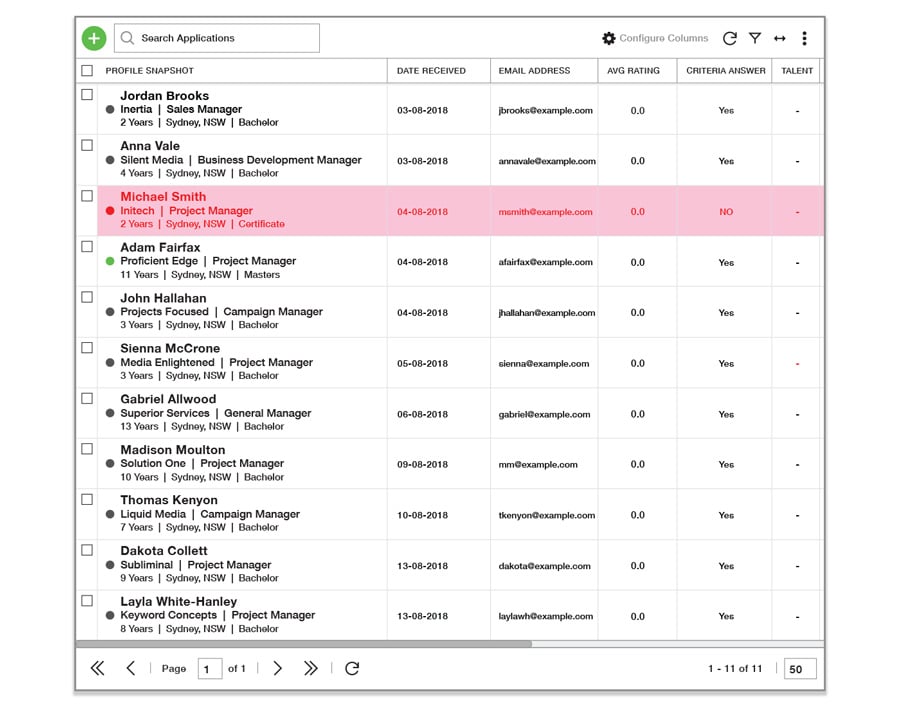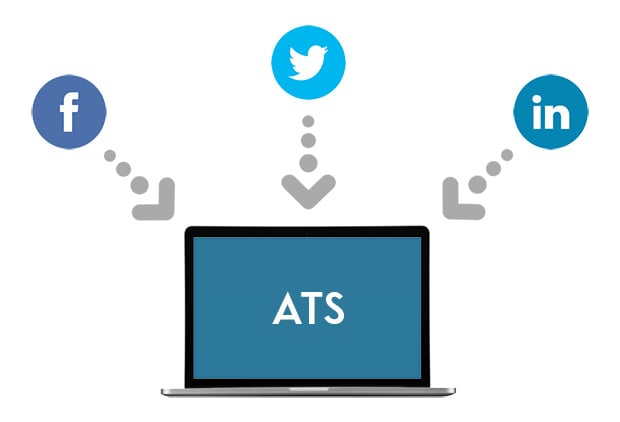How do you make sure that your resume is actually seen, let alone assessed by the recruiters that you sent it to?
What would you think if we told you that no more than 30% of all resumes are actually seen by recruiters?!
This is why you need to know about a BEAST called the Applicant Tracking System, or ATS for short. It’s the gatekeeper BEAST that you have to go through to get to the recruiters. The ATS’ job is to eliminate the so-called weak applications and only present the strong applications to the recruiter.
I mean this sounds logical, right? I’m sure you would do the same i.e. you would use the technology of some kind that would save you spending time on applications that don’t meet the requirements of the job… let alone being in the top 10% of the ones that meet those requirements.
As a candidate, this is what you need to know…
Fact # 1) What’s An Applicant Tracking System?
So what’s the job of the ATS? It’s to automatically screen out any application that doesn’t meet the job requirements and to sort the ones that make it, based on the strongest applications first.
Fact # 2) Why Do Recruiters and HR people use them?
Recruiters use it because they struggle with the volume of applications they receive and so they look for tools to help them get to the relevant applications quickly. They don’t want to have to go through 1,000s of average/irrelevant applications before getting to the gems (the relevant and strong ones).
Fact # 3) How Do Applicant Tracking Systems Work?
OK, so to ensure your resume is seen and assessed by recruiters, you need to understand how the ATS works. You need to know the various methods the ATS BEAST uses to Auto-screen and auto-sort applications – please allow me to help you:
Method # 1 – Auto-screening Based On Multi-choice Questions
Recruiters create a multi-choice question and indicate which of the options provided in the drop-down answer, constitute the knockout choices. So if and when a candidate choose any of those knockout options, their application is automatically deemed unsuccessful and gets placed into the unsuccessful bucket.
Method # 2 – Automatic Scoring System Based On Weighting Of Questions
In addition to the auto lockout when a candidate chooses an unacceptable answer, recruiters can assign a weight for each question based on how critical/important the question for the role. By the time an applicant has finished applying for a job, a score is automatically assigned to them by the ATS based on the points they collected from answering each question.
Method # 3 -Automatic Rating Based on AI Technology
Some Applicant Tracking Systems have AI technology built-in which matches job descriptions with resumes of applicants and rate those resumes (applications) against the jobs. So when the recruiter goes to look at the applications against a particular job, they see the list sorted based on the highest rating first.

Method # 4 – Keyword Search For Passive Recruiting
Some Applicant Tracking Systems allow recruiters to scan every resume in their entire database (potentially millions in the case of large companies), and look for specific keywords in those resumes; then bring up those resumes which contain said keywords.
We have so far discussed the various ways, your application is screened, rated and scored. But how about when you’re not actively looking for a job, and a recruiter reaches out to you to discuss a job opportunity? Well yes, your rating/score from previous jobs might have something to do with it, but the chances are, the recruiter used their ATS to search for relevant people for a job that was assigned they’re trying to fill.
Keyword example # 1: “Store Manager”
Meaning, I’m looking for a candidate who has worked as a Store Manager – I want these two keywords to be in this exact order i.e. I’m not interested in a resume that has those two keywords where the word store is mentioned in one paragraph (context) and the second keyword being manager is mentioned in a completely different paragraph.
Keyword Example # 2: “Store Manager” AND lingerie AND “POS Software” AND Budget
I’m looking for a candidate who worked as a store manager for a lingerie store, and has experience in POS software and was involved in the budget of the store.
Method # 5 – Video Interviewing

In this form of interviewing the candidate records themselves while they’re answering a number of questions, the recruiter has set for them. This allows recruiters to see, hear and watch the body language of the candidate, as they answer critical questions about the role their applying for.
For example for a sales role, the question could be: In 2 minutes, tell us why you love to work in sales?
This is in particular effective if candidates live very far from where the interviewer is based, especially if they live overseas. It’s also effective if the person comes from a different background and understands another language; therefore the interviewers want to see how they would communicate with their diverse clients. Not only would the English language be important, but also the body language and communication skills. This can show how they can relate as well as their response time, plus many more.
Method # 6 – AI based Psychometric Assessment Based On Watching a video interview
Applicant Tracking Systems might contain such technology where predictive analytics rate candidates against a job by processing, and analysing video interviews where the candidate is answering specific questions about the role. This technology can turn behavioural data from video interviews into custom insight reports on personality and soft skills. It can then be benchmarked against other industry performers and help to discover more about your candidates.
Fact # 4) Your Social Profile

Although it’s considered by some organisations to be discriminating and invasive to check someone’s social profile before considering their suitability for a particular job, many organisations still do it. Some Applicant Tracking Systems have convenience and smarts that automatically constructs the various social profile links for the candidates as soon as they apply, and so; by the time the recruiter opens the application page in the ATS, those links are all there for them, to consider along with the resume and other aspects of the application.
Fact # 5) How Do You Get Through the ATS BEAST?
Now that you’ve met the BEAST and understand how it works, let’s see how you make sure that you get through them and therefore your resume is seen by them!
- No Fluff – keep it real, professional and straight to the point.
- The right keywords in the right context – Make sure all relevant keywords are presented in your resume and in the right context too.
- IT’S NOT ALWAYS THE BEAST’S FAULT – do not apply for the wrong job and blame it on the Applicant Tracking System – so many candidates apply for jobs for the sake of applying! They don’t spend enough time researching the job and the organisation to make sure that they: a). Would do this job at this organisation and b). Have a good chance of landing the job. So for those who click the apply button straight after reading the job title, I’m sorry, but you can’t complain if you never hear from recruiters, or in some cases, you get many unsuccessful replies.
- 3 sections for 3 roles – You can’t make your resume good enough for every role out there – so pick a small number of roles… the ones that you care about and make sure you cover them well. Check that your resume has enough information for those top 3 roles that you’re pursuing, so when the Applicant Tracking System is analysing your resume and subsequently when the recruiter is reading your resume, they both find sufficient and quality content pertaining to that role.
Until Next Time, Take Care!





Blog comments